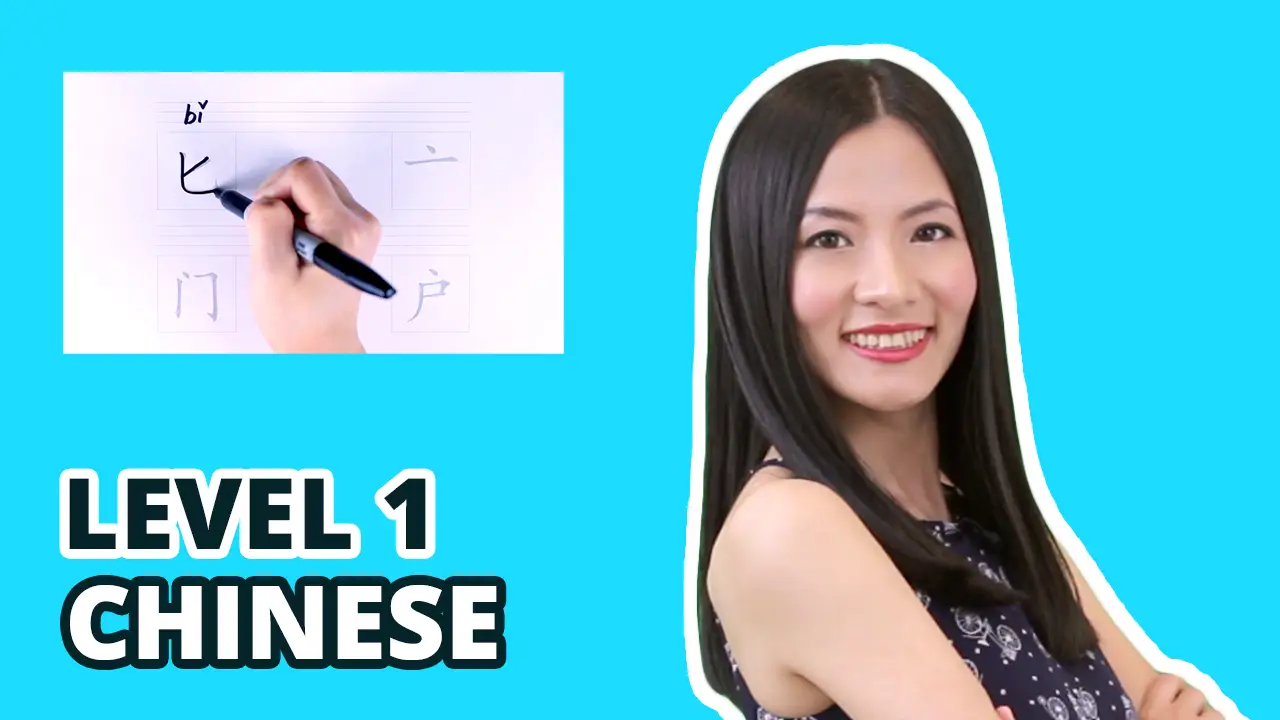Level 1 Lesson 13.1 – One Table; Two Chairs
Measure Word 张 | Measure Word 把 | Suffix 子 in Chinese
In this video lesson we'll learn how to use the Measure Word 张 and 把 in Chinese in Chinese. And we'll also learn how to use the Suffix 子 in Chinese to make nouns.
VOCABULARY
GRAMMAR
Grammar 1: Measure Words in Chinese (IV) · HSK 1
We've learned the usage of Measure Words in Chinese with two structures:
- Number + Measure Word + Noun (Phrase) - Beginner Chinese Course Lesson 16.
- Pronoun 这/那/哪 + Measure Word + Noun (Phrase) - Basic Course Lesson 17 and Lesson 18.
There are more than just a few Measure Words in Chinese. The two we're going to discuss today Measure Word 张 zhāng and Measure Word 把 bǎ, can sometimes also be used as verbs.
张 zhāng can also mean "to spread". 把 bǎ can also mean "to grab". Their meaning as verbs help form their usage as Measure Words.
Grammar 2: Measure Word 张 · HSK 1
Measure Word 张 zhāngs can be used for things that have a flat surface such as table, desk and bed.
- yì zhāng zhuōzi 一张桌子 a "zhang" (of) table
- yì zhāng chuáng 一张床 a "zhang" (of) bed
- yì zhāng yǐzi 一张椅子 a "zhang" (of) chair
Grammar 3: Measure Word 把 · HSK 1
Measure Word 把 bǎ can be used for things that have a handle or a handle-like part that's easy to grab.
- yì bǎ yǐzi 一把椅子 ① a "ba" (of) chair
- yì bǎ dāo 一把刀 a "ba" (of) knife
NOTES: ① 椅子 can be used with both Measure Word 张 and 把, because 椅子 usually has a flat surface and for chairs that are easy to grab, 把 is also okay to use.
Grammar 4: Suffix 子 in Chinese · HSK 1
Suffix 子 in Chinese is a very common and useful building element of Chinese words. Words with Suffix 子 are most likely nouns.
We mentioned that 2-syllable words are pervasive in Chinese.
Even though 子 does not really mean anything, it comes quite handy to build 2-syllable words.
For example in the following words, the character in front of 子 already contains the meaning of the word and 子 mostly function as: (1) to make the word 2-syllable (2) to make the word a noun.
- zhuōzi 桌子 table; desk
- yǐzi 椅子 chair
- fángzi 房子 house; apartment
- yèzi 叶子 leaf
- yǐngzi 影子 shadow
- běnzi 本子 notebook
5 Comments
Leave a Reply
You must be logged in to post a comment.

Great all 3rd tones
你想买几把椅子,what to do?
I notice that 椅子 (yizi) (chair) can take either 张 (zhang) or 把 (ba).
That’s because it has both a flat surface and a handle, right?
See “Grammar 3” above.
I understand that 老 (lao) means “old.”
I understand that 虎 (hu) means “tiger.”
I understand that 老虎 (laohu) is a synonym for 虎 (hu), also meaning “tiger.”
I can understand why teachers are perceived as being old, but I don’t understand why tigers are perceived as being old.
Tiger cubs aren’t old, are they?
A Chinese character can be used similarly as a “root”, a “prefix” or a “suffix” in English. When used in a word, as a “root”, a “prefix”, or a “suffix, usually the character carries a meaning but sometimes they don’t.